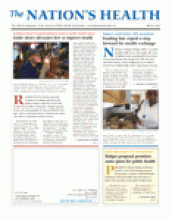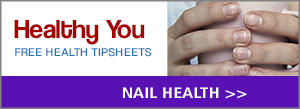When you were a kid, your parents always told you to drink your milk. There was a reason for that: Milk contains calcium, a mineral your body needs to build healthy bones. Here’s the clincher: Your body can’t produce calcium on its own. The only way to get it is through the food you eat, and a lifetime of healthy bones begins in childhood.
“Parents need to educate their children about bone-healthy behaviors,” says Felicia Cosman, MD, clinical director of the National Osteoporosis Foundation. “Bone health matters because osteoporosis is a disease where bone is weak and likely to break with minimal amounts of trauma. It’s a disease where people can die. They can become disabled. They can become deformed. They can have chronic pain. It is one of the main reasons that gets people into nursing homes, particularly after a hip fracture. All of these consequences of osteoporosis take such a toll on our lives that it’s important that we do everything we can while we are young and middle aged and older to prevent osteoporosis.”
So don’t be the proverbial bonehead. Start now to practice the healthy behaviors that can keep your bones healthy at all stages of your life.
Bone up on bone health
Lifelong skeletal health begins in childhood. The nutrition and exercise choices you establish for your kids can make — or break — their bones in later years.
Most of your daughter’s peak bone mass, up to 90 percent in fact, will have been acquired by the time she reaches age 18 — and by age 20 in boys. According to the National Institutes of Health, many things can influence your bones’ strength and density, including gender, race, nutrition, physical activity, hormonal factors and lifestyle behaviors.
Teach your children about healthy lifestyle choices, such as saying no to tobacco, drugs and alcohol, and not engaging in activities that put their bones at risk. In addition to its other health risks, smoking is very bad for your bones.

“There are chemicals in cigarette smoke that interfere with the cells that make bones,” Cosman says.
Bones get stronger with exercise. Because bones are living tissue, weight-bearing physical activity, such as running, causes new bone tissue to form. The push and tug of muscles against bones during exercise strengthens both bones and muscles.

Photos and art courtesy iStockphoto
After puberty, men tend to acquire greater bone mass than women, and black women generally achieve higher peak bone mass than white women.
Between about age 30 to menopause, women experience little change in their total bone mass. But the first few years after menopause can bring a rapid bone loss, which can lead to osteoporosis. As you get older, bone mineral density tests should be done to check for bone loss, because as many as half of all women and 25 percent of men older than 50 will break a bone because of osteoporosis. Instead of letting bone issues rattle you, keep your bones strong by eating a diet rich in calcium. Adults younger than 50 need about 1,000 milligrams of calcium every day. Folks older than 50 need 1,200 milligrams of calcium a day. Calcium supplements aren’t recommended as replacements for calcium obtained through foods, however.

“We want people to just take calcium supplements for what is not in the diet,” Cosman says.
If you’re lactose intolerant, lactose-free and lactose-reduced milk and milk products are available. Talk to your health care provider for guidance.
To absorb that calcium, your body also needs vitamin D.
“It is very difficult to get vitamin D from foods,” Cosman says. “Traditionally, our bodies have been able to make vitamin D upon exposure to the sun. But when we started wearing a lot of sunscreen, we made it impossible for the skin to make the appropriate amounts of vitamin D, and we are seeing a lot of vitamin D deficiency.”
Do continue slathering on the sunscreen, and consider taking vitamin D supplements. Most adults will need 800 units to 1,000 units of vitamin D a day. People with osteoporosis and some other conditions may need even more. Ask your doctor for guidance.
Along with calcium, plenty of weight-bearing physical activity is important throughout life. According to NIH, weight-bearing physical activity is any activity in which the body works against gravity, so your feet, legs or arms are supporting or carrying your body’s weight. Some good weight-bearing activities are walking, jogging, dancing and stair climbing. Ask your health care provider for more information on the kinds of weight-bearing exercise that would benefit you, and your bones, the most.
Calcium-rich foods important for kids
Kids ages 9 to 12 need 1,300 milligrams of calcium every day, but most come up short. In fact, fewer than one in 10 girls and only one in four boys in that age group actually get the recommended amount of calcium each day, which can have an impact on their bones and teeth. A glass of milk contains about 300 milligrams of calcium, so kids can get much of their calcium by drinking three cups of low-fat or fat-free milk each day. Other calcium-rich foods that can take kids to the finish line include yogurt, green leafy vegetables like spinach, and calcium-fortified breakfast cereals, juices and breads.

>> For more bone health tips, visit http://health.nih.gov/topic/bonehealth
- Copyright The Nation’s Health, American Public Health Association









